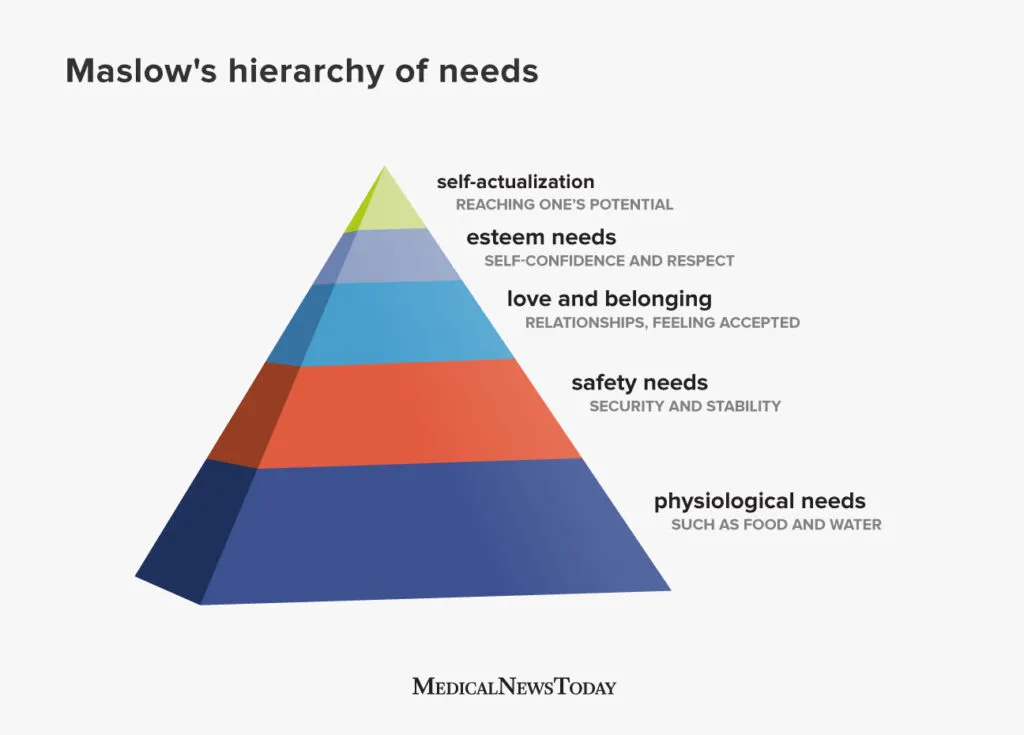In a world where capitalism thrives on dopamine-driven internet addiction, understanding its impact on our lives becomes crucial. Imagine you’re marooned on an island. It won’t be surprising if your first question is whether the internet is available on the island. While the internet could certainly be a lifeline in such a situation, providing information, tools, and even potential rescue, it’s crucial to remember the potential downsides of excessive reliance and internet addiction.
If you can’t stop refreshing your Facebook news feed, email, or any other internet app, there’s a good chance that you might be suffering from Internet Addiction Disorder (IAD), also known as Compulsive Internet Use (CIU). Though it was recognised as a hoax, its growing prevalence has given it newfound importance. Since then, internet addiction, which triggers dopamine release similarly to drug addiction, has garnered the attention of researchers and doctors from all over the world.
Spending a humongous amount of time scrolling through news feeds and checking for updates indicates this disorder. Such aimless usage of time calls for an examination of lifestyle. Personal relationships, work life, and academic performance get beatings as a consequence of its intrusion. Furthermore, the role of capitalism in perpetuating internet addiction cannot be overlooked, as it thrives on the dopamine-induced engagement of users. This article goes behind the scenes to find the reasons for internet addiction.
Causes of Internet Addiction
Biological – Dopamine and Serotonin

Dopamine is the chemical in the brain that controls mood, motivation, and a sense of reward. It engenders a high feeling while experiencing anything pleasurably unpredictable. It is the burst of this chemical that triggers us to carry out any anticipated activity that supposedly has uncertain results. In short, the release of dopamine causes us to seek, desire, and search to suppress anticipation.
Completing what we set out to do releases serotonin, also known as the “happy chemical.” Causing pleasure, Serotonin pushes the person to repeat the action to experience the emotion again and again.
Biologically, the paucity of levels of dopamine and serotonin accounts for the disorder. The deficiency necessitates one to carry out more and more behaviors to experience a sense of completion and pleasure. In simpler terms, our brain will exploit the object of pleasure when one of these chemicals lacks in measure. During a break from the internet, dopamine levels are low. A drive or an anticipation to check out new things follows the sudden onrush of this chemical. Afterward, the brain releases Serotonin upon realisation of the anticipation.
Psychological
Variable Ratio Reinforcement Schedule (VRRS)
Variable Ratio Reinforcement Schedule (VRRS), also known as operant conditioning, posits various immaterial rewards to be the reason behind internet addiction. These rewards are mostly entertaining results or news which makes a user to come back again and again. According to this theory, our expectation of “specific consequences for specific actions” molds our behavior. In light of internet addiction, one obsessively checks email or Facebook, expecting a new notification. This behavior (specific action) is in response to our pressing want for happiness (specific consequences/rewards). These specific actions become ad infinitum when the realization of the unpredictable nature of the specific consequence sets in. Simply put, we are driven to keep refreshing the page, expecting new pings, given its unpredictable nature. Our behavior becomes automatic and unanalytical owing to operant conditioning. This way, we are prompted to act at even the slightest cue.
Maslow’s hierarchy of human needs

Abraham Maslow, an American psychologist, proposed Maslow’s hierarchy of human needs, which sheds light on the order of precedence of needs in one’s life. This five-tier pyramid contains needs on various levels that mold one’s behavior. The mission to meet these needs motivates one’s behavior. The fundamental need is physiological, which includes air, food, water, and shelter. As soon as this level attains completion, one progresses to the next level. Followed by biological needs and safety needs. After these basic needs, love and belonging needs, esteem needs, and self-actualization needs come up. The necessity to meet these needs evokes a certain type of behavior facilitated by social media. Each application one uses responds to any of the particular needs as listed above. It is no wonder when one gets addicted to the internet, given that all the necessary needs are fulfilled in one place.
Everyone loves the feeling of receiving a new notification or a message so much so that it satisfies our hankering to feel wanted. Emails reward us with unpredictable news that makes the experience of feeling wanted arresting. This way, the need for esteem is met.
Facebook & WhatsApp

Hands down, Facebook does allow us to carry out human interpersonal communication. These human connections are necessary to ensure emotional and psychological well-being. Starting from adding friends to tagging photos, every feature of Facebook is indicative of a widening human connection. The ease of making human connections is the driving force for its addictive nature. Facebook, thus, fulfills belonging needs. Similarly, WhatsApp warrants inclusivity. Absence from these social networks means imminent social exclusion among friends. The addict avoids such a situation by repeatedly checking it innumerable times not to feel left out. The fear of social isolation heavily contributes to WhatsApp addiction.
Escapism through Internet Addiction
As a way of escaping the mundane nature of everyday life, some of us do exciting things like watching movies every once in a while or so. Social networks serve the same purpose of allowing us to escape our rather unexciting, boring, and ordinary lives. Such transient escapes become prolonged due to one’s inability to cope with reality. Individuals with considerable social awkwardness have a high propensity to suffer from internet addiction. The addicts supplant normal, healthy, real-life relationships with virtual ones. This way, virtual relationships take precedence over actual ones. Lack of self-esteem and happiness fuels the need to escape into the virtual world to evade reality. With the passage of time, social isolation in reality is imminent. This is because Facebook, WhatsApp, Instagram, Snapchat, and so on and so forth eliminate the need to have direct, human-to-human communication.
Habit-forming products
The most important thing to take note of over here is the formation of habit. Habit is any behavior that requires “little or no conscious thought.” It is partially true when the addicts blame the internet for being more addictive than their own behavior. How does one become obsessed with an app without it being addictive in the first place? Once the entrepreneurs saw the goldmine that the internet is, the uncalled for happened. They began to cash in on the exhibited behaviors. Habit-forming technologies surfaced, manipulating the psychology of the target audience.
In his book “Hooked: How to Build Habit-Forming Products,” NirEyal lists hooks as an essential feature of establishing a habit. A hook is any core design that attracts the users to the product to form a habit. A hook is both external and internal.
External hooks
An external hook is embedded in the product to remind you to stay and look for more. Notifications, arrows, and buttons that drive you to scroll down for more are some examples of the type. These hooks add on to VRRS in a way that they become a part of the loop. In the case of Facebook, the audience ardently refreshes the page (specific action) to beget the arresting red notification (external hook). This way, one achieves happiness (specific consequence). Thus, the audience is successfully hooked to the product.
These external triggers work best against negative emotions. These hooks give momentary relief from all the negativity. Likewise, the pressing need to ward off loneliness is complete when one uses any social networking site. The higher the intense negative emotion, the higher the usage of the product.
Internal hooks
An internal hook answers what psychological benefit the user looks for in the product and the need that the designer has to fulfill. The external hook or the feature is structured in such a way that it acts as a medium for both the designer and the user to fulfill the need. Upon fulfillment, the user begets the anticipated consequence that he or she was fishing for. To sum up, the user, in a bid to fulfill his psychological need (internal hook), undertakes a specific action mediated by a feature in the product (external hook) to have the anticipated consequence.
Henceforth, internal hooks and external hooks go hand in hand. Let’s hark back to Maslow’s hierarchy of needs to see their intersection with the theory. The user, to fulfill the need for knowledge (self-realization needs- internal hook), clicks on ‘Google Search’ (feature/external hook) in Google which will return anticipated results (specific consequence/rewards). Therefore, internal and external hooks in a product go hand in hand, helping each other. Some of the common external hooks addressed in constructing specific consequences by the designers include avoiding pain, seeking pleasure, avoiding fear, etc.
Political hues of Internet addiction
The question that is central but largely ignored is, “what is it that we are running away from?” The other way of reading the question is, “what are we being made to run away from in search of solace in internet?”
Internet addiction quells the Marxist revolution
Capitalism, as we all know, is an oppressive economic system. Karl Marx, the German philosopher who ushered in Marxism, was strongly against capitalism. In a Marxist society, all members of the society equally share capital. On the other hand, in a capitalist society, fewer members hold capital. These capitalists are said to exploit those who work under them (the working class). Marx theorised that the impending Marxist uprising would essentially topple capitalism. Having said all this, he also believed that the capitalists would employ tools to distract the working class from bringing about the revolution.
At this juncture, it is imperative to take note of the Frankfurt School’s opinion. According to this school of philosophy, the media acts as an opiate for the people – distracting them from the real problems arising out of capitalism. Extrapolating the same concept to the internet, Marxism holds capitalism responsible for the creation of false needs, false consciousness, and mass culture, which enslave people. Therefore, capitalists use the internet to orchestrate a massive spectacle to distract the working class from bringing forth the revolution that would threaten their standing in society.
Stages of distraction
Social media, the face of the internet, is visibly instrumental in distracting the audience from seeing the bigger picture. They achieve this in three stages. First, because of capitalism, the capitalist class exercises a hold over the cultural and media industries to advance and promote the collective interests of the capitalist class. Thus, their ideologies prevail and dominate the mental horizons of subordinate groups. Assume that the central motive of the capitalist class is making the common public obsessed with their body image. To accomplish this task, the capitalists generate a stream of posts and photos in giant numbers promoting their eminence.
Second, these posts use their ideological power to represent the world in a false way, preventing people from getting the true picture. For instance, this ideological domination is used to maintain negative body images among users and strengthen the established order by falsely projecting one type of figure as being natural, desirable, and inevitable.
Third, as a result, the audience unquestioningly accepts the existing social condition, which achieves hypnotic passivity and low critical consciousness.
Through these stages of promotion, false projection, and institutionalization of hypnotic passivity, the capitalists firmly ingrain their ideologies. What do they achieve through this? Distraction from reality.
Impacts of Internet Addiction

Chancing upon an achievement of a friend in social networking sites triggers feelings of self-pity, resentment and envy leading to depression. People treat these sites as popular trophy shelves by displaying their strengths and opportunities and not weaknesses and losses.
Besides depression, another major problem is a distortion of one’s self-image. Coming across a photo of a friend with a size-zero figure or brawny muscles would lead to unnecessary comparisons. People also become too harsh with criticizing one’s appearance. They, increasingly, find it difficult to overcome these images. Negative body image and low self-esteem have contributed to eating disorders, which is a wild rage nowadays. These comparisons result in low self-image. This suggests that social networking sites function as expansive magazines that provide a platform for people to compare themselves with consciously constructed versions of perfection. Therefore, addicts are likely to have dissatisfaction with their appearance and their status of being.
Dearth of humanisation in social networking sites is evident from these happenings. They do not display users as complex individuals with their own palette of strengths and weaknesses. With an increasing need to flaunt one’s success, there is a loss of individuality in the bargain. This is owing to the fact that, the network exposes only that appealing fragment of a person’s life for other users.
Depression, irritability, fear, anxiety, loneliness, Lack of concentration, stress, resentment, and a feeling of loss are some of the impacts of internet addiction. Even self-destructive thoughts stem from these situations.
Conclusion
In the vein of The Breakfast Club (1985), teenagers’ journey of self-discovery is often hindered by internet standards, fostering a struggle between their true selves and societal expectations. This clash is exacerbated by capitalism’s exploitation of internet addiction, where dopamine-driven digital actions create an illusory sense of well-being, trapping users in a cycle hard to break. Recognizing this manipulation is crucial. The internet, a double-edged sword, demands users to establish digital boundaries to escape this capitalist-induced illusion and find balance.
The capitalists use the internet to keep the users safely locked up in an illusion that is hard to get out of. Once in the loop, the users start to believe that a digital action can make them feel better. Firmly drawing digital boundaries to be on the greener side is the only way out of the illusion. Internet, a quintessential example of a double-edged sword, needs careful treatment and balancing on the part of users.
Read more: A History of Wi-Fi: How This Innovation Changed the World


